Inputting the chords on the bottom staff
Inputting notes on top of each other to create chords is very similar to inputting notes in sequence (in that the caret must be active), but the input behavior is slightly different.
Procedure
- In bar 1, select the rest on the bottom staff.
- Press Shift-N to start note input.
-
Press Q to start chord input.
-
Chord input allows you to input multiple notes at the same position; that is, the caret position. In chord input, a + sign appears at the top of the caret.
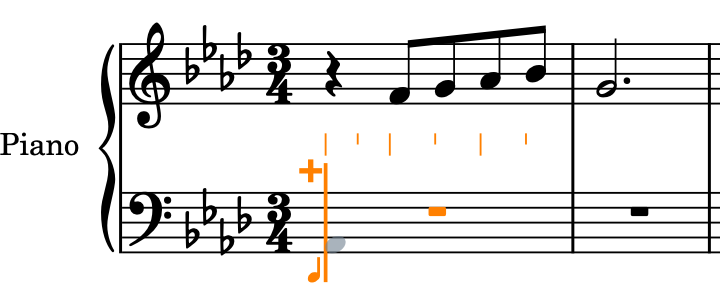
-
You can also start chord input by clicking Chords
 in the Notes toolbox on the left of the window.
in the Notes toolbox on the left of the window. -
As in the previous task, the default note duration of a quarter note (crotchet) is selected in the Notes panel. In this piece, the chords in the first few bars are all quarter notes, so you don’t need to change the duration.
-
-
Press A to input an A♭.
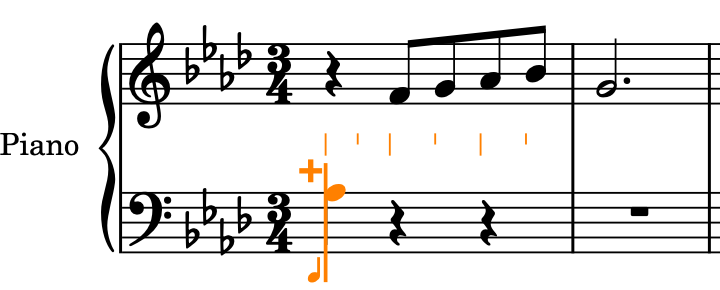
-
Because this is the first pitch on the staff, Dorico uses the default pitch of the clef to determine the register, and therefore chooses the A♭ closest to the F at the center of the bass clef. However, this piece requires the A♭ below.
-
-
Press Ctrl/Cmd-Alt/Opt-Down Arrow to transpose the selected A♭ down an octave.
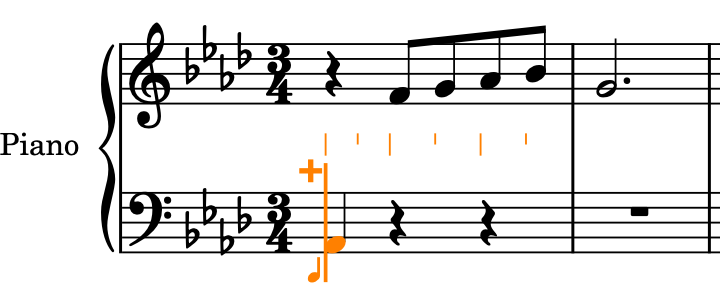
-
Alt/Opt-Down Arrow transposes notes down by staff position; that is, by step. Adding Ctrl/Cmd transposes notes down a larger amount; that is, by octave.
-
-
Press E to input an E♭.
-
In chord input, Dorico adds new notes above the previous note by default.
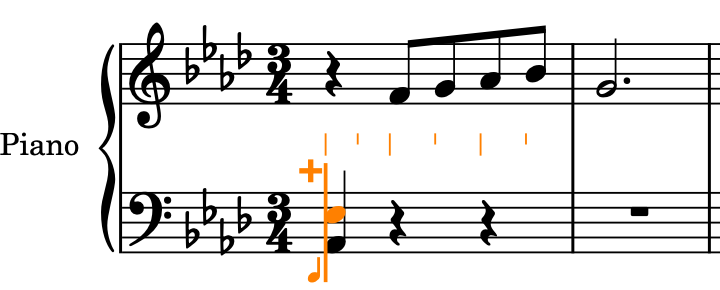
-
-
Press Space to advance the caret.
-
In chord input, the caret does not advance automatically, allowing you to build notes into chords at a single rhythmic position. Dorico expects chord input to continue until you stop it.
-
Because the note duration currently selected is a quarter note, pressing Space advances the caret forward a quarter note.
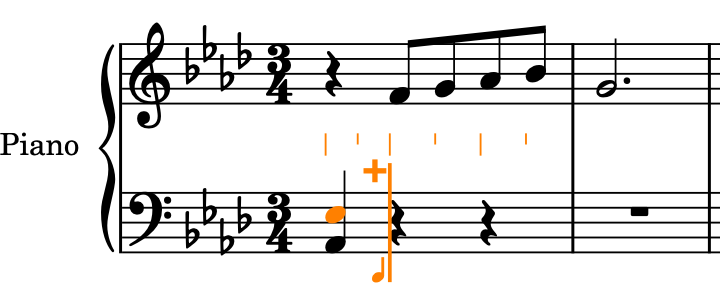
-
Now that Dorico has the first chord for pitch reference, the next A♭ would be input in the same octave as the first chord by default, which is not what the piece requires.
-
-
Press Shift-Alt/Opt-A to input the A♭ above the note at the bottom of the previous chord, then press C then E to input the corresponding pitches as a chord above the A♭.
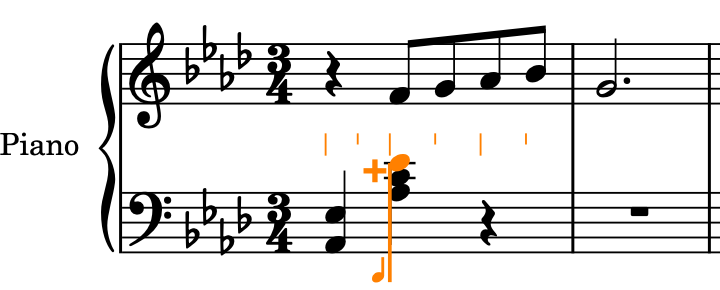
-
Dorico automatically selects notes the smallest interval away from the previous note. Pressing Shift-Alt/Opt as well as the letter for the note inputs that note above the previous note, regardless of the interval. For a lower note, it’s Ctrl-Alt (Windows) or Ctrl (macOS) plus the letter for the note. If you’re not sure whether you need to specify the register, you can always transpose notes up/down octaves after inputting them.
-
- Press Space to advance the caret.
-
Press A, then C, then E to input the corresponding pitches as a chord.
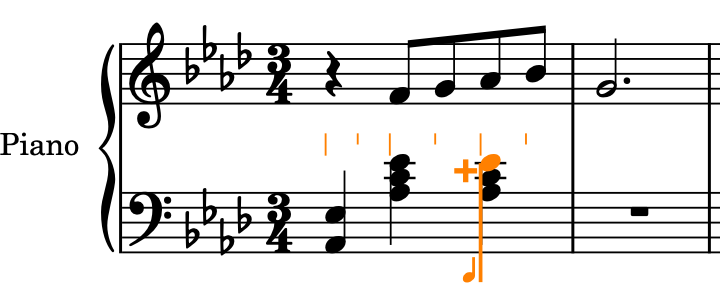
-
The next bar is very similar to the first bar. However, it starts with the lower A♭ again.
-
- Press Space to advance the caret.
- Press Ctrl-Alt-A (Windows) or Ctrl-A (macOS) to input the A♭ below the note at the bottom of the previous chord, then press E to input an E♭ above the A♭.
- Press Space to advance the caret.
- Press B to input a B♭, then Ctrl/Cmd-Alt/Opt-Up Arrow to transpose the B♭ up an octave.
- Press D, then E to input the corresponding pitches above the B♭.
- Press Space to advance the caret.
- Press B, then D, then E.
- Press Space to advance the caret.
-
Repeat steps 4 to 17 to input bars 3-4.
Tip
Alternatively, you can press Esc to stop note input, select bars 1-2 on the bottom staff, then press R to repeat the material directly after itself.
- Press Esc or Return to stop note input.
Result
You have input all the chords required in the first four bars for the bottom staff.

After Completing This Task
Continue inputting chords on the bottom staff up until beat 1 in bar 6, as accidentals are required on beat 2 in bar 6.